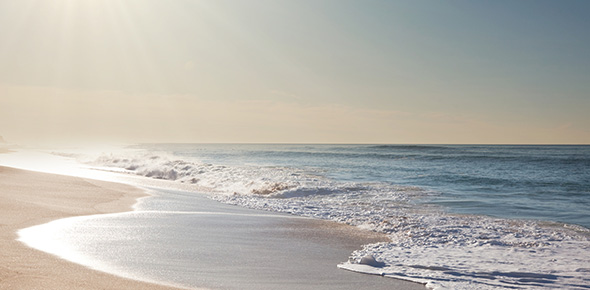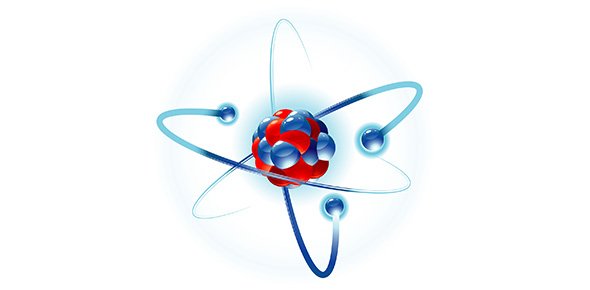Related Flashcards
Related Topics
Cards In This Set
| Front | Back |
|
What
is the most prominent feature on Earth?
|
Water/ Ocean
|
|
How
much of Earth’s surface is covered by the oceans?
|
70.8%
|
|
How
can our world ocean be divided?
|
Pacific - more depth one
Atlantic - 2nd depth one Indian - 3rd depth one Arctic - less depth one |
|
What
are the 3 steps of the scientific method?
|
Observation
Hypothesis Testing Theory |
|
How
do theories and hypotheses differ?
|
A hypothesis is a tentative, testable statement. In contras a Theory is well-substantiated explanation. Also a Theory is a tested hypotheses.
|
|
How
does oceanic and continental crust differ?
|
The oceanic crust is composed by basalt and is denser but less thicker that the continental crust that is made of granite that is less dense but more thicker.
|
|
How
did Earth’s atmosphere and oceans form?
|
Outgassing–occurred during density stratification
–Water vapor, Carbon dioxide, Hydrogen, other gases Outgassedwater vapor fell as rain |
|
What
is the mechanism of plate tectonics?
|
According to the theory of continental drift the outermost portion of earth is composed of a patchwork of thin, rigid lithospheric plates that move horizontally with respect to one another. the idea began with a hypothesis of continental drift.
|
|
What
are the 3 types of plate boundaries?
|
Divergent: move apart
Ocean-ocean: new sea floor is created (sea floor speeding) Mid- ocean ridge
Continent-continent: as a continent splits apart, new sea floor is created (continental rifting) Rift valley Convergent: move together Ocean-continent: old sea floor is destroyed (subduction) Trench. Explosive andesitic volcanic eruptions Ocean-ocean: old sea floor is destroyed (subduction) Trench. Denser plate subducted. Volcanic island arcs generated. Continent-continent No subduction (collision) Tall mountains Transform: they past each other Oceanic: (transform faulting) Fault. Ocean floor only Continental: (transform faulting) Fault.cuts across continent. Shallow but strong earthquakes |
|
Intraplate
features: Hotspots and mantle plumes
|
Hot spots are locations on Earth's surface where an unusual amount of
volcanism, not associated with subduction processes are focussed. These
spots are often at the head of a track of volcanic activity that has
"burned through" the lithosphere. The large number of hot spots in the Atlantic ocean are suspected to have played a role in the breakup of Pangaea.
Seamounts - Rounded tops Tablemounts - Flattened tops |
|
Is
the Atlantic Ocean getting larger or smaller?
What about the Pacific?
|
The Atlantic is getting larger than the pacific because most of the subduction is in the pacific that mean that the sea floor of the pacific is getting subducted
|
|
Ocean
floor divided into 3 major provinces:
|
ContinentalDeep-ocean
basinsMid-ocean
ridge
|
|
Continental
Passive
continental margins
Active
continental margins
Convergent
active margins
Transform
active margins
Features found along continental margins:
Continental
shelf (shelf break, continental borderland)
Continental
slope
Submarine
canyons and turbidity currents
How
are submarine canyons formed?
Continental
rise (graded bedding, turbidite deposits, submarine fans)
|
Passive continental margins: develop along coastlines that are not tectonically active, including much of the Atlantic Ocean coastline.
Active continental margins: are those that are tectonically active, such as along much of the Pacific coast. Convergent active margins:A subduction zone is formed at a convergent plate boundary when one or both of the tectonic plates is composed of oceanic crust. The denser plate, made of oceanic crust, is subducted underneath the less dense plate, which can be either continental or oceanic crust. Transform active margins: since these faults neither create nor destroy lithosphere, end abruptly and are connected on both ends to other faults, ridges, or subduction zones. Features found along continental margins: Continental shelf (shelf break: marked increase in slope, continental borderland) Continental slope: Where deep ocean basins begin Submarine canyons and turbidity currents How are submarine canyons formed? Narrow, deep, v-shaped in profileSteep to overhanging wallsCarved by turbidity currents: Underwater avalanches Continental rise:Transition between continental crust & oceanic crust (graded bedding: Marked by turbidite deposits, turbidite deposits: Deposits generate submarine fans, submarine fans become abyssal plains) |
|
Deep-ocean
basins
|
Deep-ocean: Abyssal Plains
Extend from base of continental rise Some of deepest, flattest parts of Earth Suspension settling Atlantic & Indian oceans Features found in deep-ocean basins: Abyssal plains (suspension settling, volcanic peaks, abyssal hills) |
|
Mid-ocean
ridge
|
Mid-Ocean Ridge
Longest mountain chain Basaltic lava Divergent Features found at the mid-ocean ridge: Rift valley, oceanic ridges Volcanic features (pillow basalts) Hydrothermal vents: Sea floor hot springs/unusual deep-ocean ecosystems |







